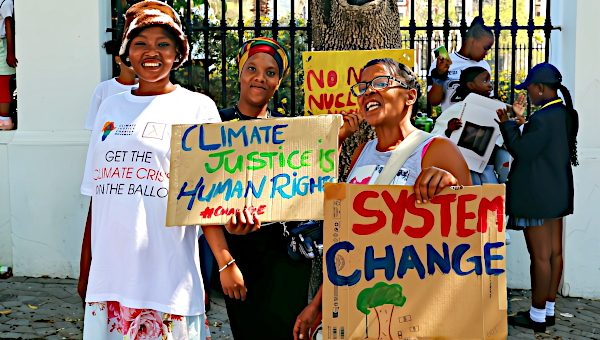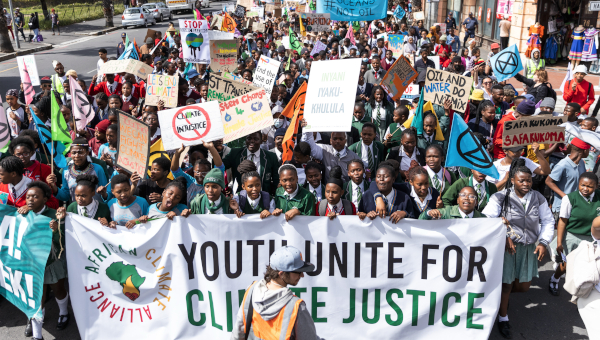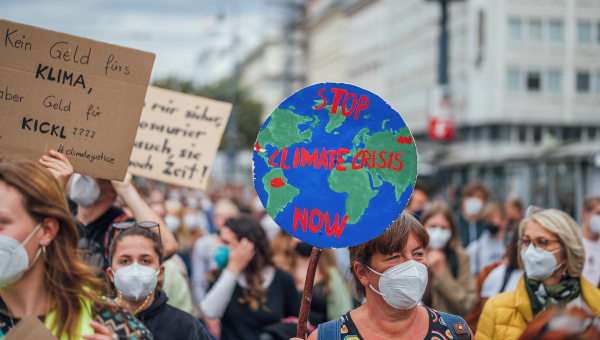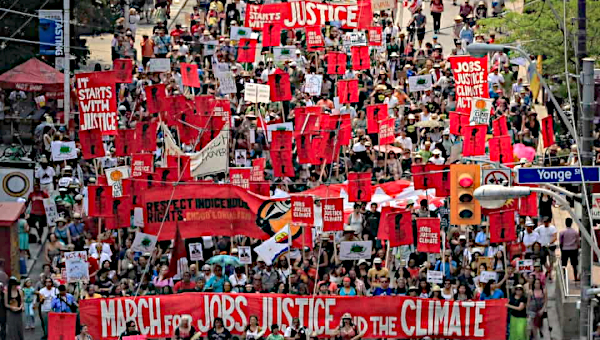Weaponizing the Numbers
The Hidden Agenda Behind Fossil-Fuel Subsidy Reform
Among progressives concerned about climate change, few issues provoke as much anger as the knowledge that governments continue to subsidize fossil fuels. According to the International Monetary Fund (IMF), in 2017 these subsidies totaled $5.2-trillion annually.1

Don’t governments realize that fossil fuels are cooking the planet? The scientific community says we are in a desperate race against time, but the coal, oil, and gas companies apparently still have their noses deeply in the public trough.
Most policy elites think fossil fuel subsidies should go. A decade ago, the Group of Twenty (G20) leaders committed to “rationalize and phase out” government support for coal, oil, and gas, a decision supported by major institutions like the IMF and the World Trade Organization (WTO). At a summit in May 2019, U.N. Secretary-General António Guterres said “taxpayers’ money” was being used “to boost hurricanes, to spread droughts, to melt glaciers, to bleach corals. In one word – to destroy the world.”
These are fighting words, but there is good reason to be wary of the global elite’s call for subsidy reform. This call is framed in ways that seek to legitimize and universalize neoliberal approaches to energy transition. Activists may think, “So what? If it gets rid of subsidies, what’s the problem?” But there is a real risk that the consolidation of neoliberal policy will produce outcomes that are considerably worse than the outcomes produced by fossil fuel subsidies.
D-Day for the Climate?
Subsidy reform is routinely described as a major mitigation option. In other words, if countries are serious about reaching emissions reductions targets, then it should be a top priority. This is because – the argument goes – subsidies stimulate additional fossil fuel production and consumption, lead to “carbon lock-in” (e.g., new power plants that will burn coal and gas for decades), distort energy markets, and make it harder for clean energy to compete.
Some studies suggest that the removal of subsidies would lead to substantial reductions in greenhouse gas emissions (GHGs). One concluded that this could equal a quarter of the combined emission reductions proposed by countries under the Paris Agreement.2 Using 2015’s global emissions and pollution levels as a reference, a recent IMF study concluded that, if there had been no subsidies in place at all during that year, emissions could have been reduced by 28 per cent.3
A recent study by the International Institute for Sustainable Development (IISD) concluded that money supporting fossil fuels should be redirected toward supporting renewable energy.4 Noting that 70 per cent of the growth in energy demand in 2018 was met by fossil fuels, the authors urged governments to expedite a “subsidies swap” in order to accelerate the energy transition.5 Excited by this thought, The Guardian’s Damien Carrington recently claimed, “Just 10-30 per cent of the fossil fuel subsidies would pay for a global transition to clean energy.”
With numbers such as these flying around, it’s no surprise that environmental groups have made subsidies a major target, and getting rid of them is seen as a potential “D-day” for the climate – a watershed moment in the war between clean and dirty energy.
Know Your Zombies
In order to assess these claims, first we need to recognize the difference between producer subsidies and consumer subsidies. Producer subsidies may take the form of subsidized inputs, preferential tax treatment, and direct budget transfers – straight-up corporate welfare for fossil fuel companies. For example, in 2015 when global oil prices were low, the U.K. government reduced the highest tax rate on North Sea oil production from 80 per cent to 68 per cent in order to keep oil operations in the black.6
According to IMF and Organization for Economic Co-operation and Development (OECD) data, producer subsidies in 2015 may have totaled some $17.9-billion, in which case they do not amount to much. One non-governmental organization (NGO) report estimates that G20 producer subsidies are as high as $70-billion – more than 70 per cent of which goes to oil and gas. The same report adds $88-billion in public financing from majority government-owned banks.
In fact, if all public support for, or investment in, fossil fuels is factored in, the total could reach $444-billion. These higher producer subsidy estimates have prompted claims from progressive NGOs that a significant amount of new fossil fuel production would have been “uneconomical” if not for government subsidies, thus the term “zombie energy.”
But none of these “add-ons” are “subsidies” as typically understood. Public banks, for example, are also major investors in renewable energy, and these investments are packaged in ways that guarantee profit for renewable energy companies, which means these investments are also subsidizing producers. And while state-owned companies invested $286-billion in fossil fuels during 2013 to 2014, it’s a bit of a stretch to assert that public investment to meet energy needs is the same as a subsidy.7
Mind the Gap
Either way, most “fossil fuel subsidies” are not producer subsidies; they are consumer subsidies. These can be pre-tax or post-tax. Pre-tax consumer subsidies arise when the price paid by consumers is below the cost of supplying the energy. OECD, International Energy Agency (IEA), and IMF estimates for global pre-tax subsidies amounted to $305-billion in 2017.8
Pre-tax consumer subsidies are calculated based on the difference between an “international benchmark price” for coal, gas, and oil products (like gasoline or kerosene) and the actual retail price paid by consumers. According to the IMF, pre-tax consumer subsidies measure the degree of underpricing.9
So if the Venezuelan government decides to sell gasoline to Venezuelans at, say, $1.00 per litre below the international benchmark unit price, that dollar becomes a subsidy. If Algeria sells gas for cooking or heating to Algerians at twenty cents per therm below the benchmark price, that twenty cents is also a subsidy. If South Africa discounts electricity for poor households to ensure affordable power, the discount below what the IMF calls the “efficient price” also counts as a subsidy.
This method of calculation is very controversial. Poorer energy-producing countries argue that anything below the actual cost of producing the product can be legitimately described as a subsidy. If calculated in this way, the “cost-based” subsidies figure will be lower than the IMF’s $305-billion estimate by a considerable margin. But the IMF insists that the benchmark price – in other words, the level at which coal, oil, and gas can be sold on global markets – should determine how subsidies are calculated. This may sound like a minor detail, but it carries huge political and ideological significance. If energy is produced for human development, then actual costs are paramount; if energy is produced to maximize profit, then the global selling price is what really matters.
Apparitional Subsidies
Added together, these numbers still do not begin to approach the IMF’s $5.2-trillion figure. In fact, if we stick to IMF data, pre-tax producer and consumer subsidies amount to just 6 per cent of the $5.2-trillion – and that’s without challenging the IMF’s controversial “benchmark price” calculation.
This is where the post-tax consumer subsidies come in. These post-tax subsidies reflect the difference between end-use prices and what consumers would pay if the price of “negative externalities” were included: local air pollution, effects of climate change, traffic congestion and road accidents, and other health impacts.10
Why is it called a “post-tax” subsidy? The “tax” in this instance is a “corrective” or “Pigouvian tax.” As an IMF working paper describes it, “When the consumption of a good generates an external cost to society, then efficient pricing requires that consumers face a price that reflects this cost.”11 This is an attempt to put a dollar figure on the environmental and other damages that result from lighting the cooking stove, taking a tuk-tuk (three-wheeled taxi) or colectivo (bus) to work, or watching TV. Therefore, if someone dies of a cardiopulmonary condition as a result of the emissions or pollution-related activities, consumers should pay the value of that person’s lost productive potential.
In other words, roughly 94 per cent of the IMF’s $5.2-trillion in “fossil fuel subsidies” exists only in theory. These subsidies cannot be “removed” or “phased out,” because there’s nothing there. Post-tax subsidies – perhaps better described as “apparitional” subsidies – would only materialize as real money if the externalities (pollution and damage to health, for example) were actually paid for. But is this remotely likely? According to one of the IMF’s chief subsidy wonks, David Coady, full payment would mean, “At the global level, the price of coal, petroleum products, natural gas, and electricity would increase by around 200 per cent, 50 per cent, 45 per cent, and 70 per cent, respectively.” This, notes Coady, raises important issues regarding, “what might be done to address the challenges of implementing energy price reform in practice.”12
Green Structural Adjustment
Reading the IMF, OECD, and similar reports on subsidies, it’s hard not to conclude that the calculations are being inflated and then weaponized to serve a purpose – and the purpose is not primarily to pressure fossil fuel interests to clean up their act. Rather, it is to strengthen the dominant neoliberal anti-government discourse. “Subsidy reform” provides a green protective blanket for the same anti-public, supply-side, and socially regressive “structural adjustment” agenda that was promoted so aggressively by these same institutions in the 1980s and 1990s across the Global South.
If the dollar value of subsidies has indeed been inflated for political and ideological purposes, then the same can be said of the emissions reductions estimates that derive from them. The IMF maintains that, if users paid the “full price” for fossil-based energy, consumption would fall and a more efficient use of energy would eventually follow.13
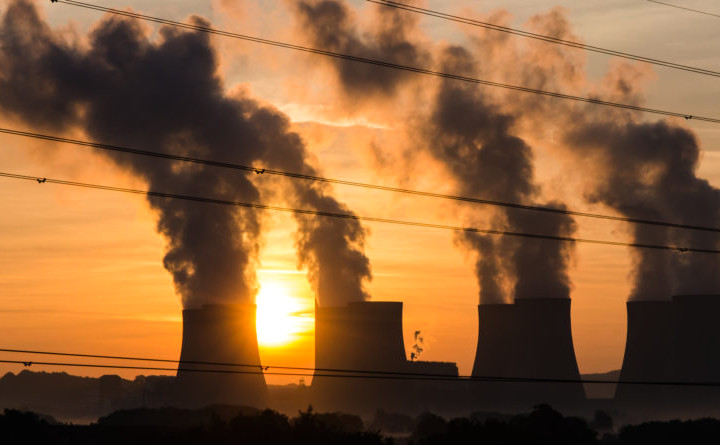
But the relationship between prices, fossil fuel use, and emissions reductions is based on what economists call “elasticities.” Research has shown that the “price-demand ratio” can be quite pronounced when consumers have alternative energy options. But when alternatives do not exist – which is often the case – increases in prices produce a “low to moderate” reduction in demand.14 According to the IMF, “Consistent, country-level models of how fossil fuel use responds to price reform are not yet available on a wide scale.”15 In other words, the IMF’s assertion that “getting energy prices right” will dramatically curtail energy90 New Labor Forum 29(1) use is politically convenient, but it is not always supported by the data.16
Neoliberal institutions have consistently argued that decarbonization, liberalization, and privatization are inextricably connected. Therefore, addressing climate change is contingent upon the consolidation of neoliberal energy policy. There is, always, no alternative. But if climate concerns were paramount, the neoliberal institutions would admit that their “green growth” policies have been a monumental failure.
Mexico provides a good example of this “green structural adjustment.” A review team convened by G20 Finance Ministers and the OECD examined the “energy reform” measures pursued from 2012 to 2016 by the neoliberal (and hugely unpopular) government of Peña Nieto. Subsidies for gas and electricity were removed, and parts of the energy sector have been privatized. Praising the government for its “remarkable accomplishment,” the review team’s November 2017 report noted,
“The country’s opening up of its markets to foreign producers and distributors has been accompanied by the raising of consumer prices for transport fuels, and the establishment of higher levels of excise taxes, plus the introduction of the carbon excise tax.”17
A series of incremental increases in the price of gasoline over several years was capped by a 20 per cent increase in January 2017. This led to human road blockades, strikes, and nationwide protests.
But the increase in prices has done little to alter Mexico’s dramatic rise in energy use. Mexico’s gas consumption for power generation has almost tripled since 2000, “enabled by the expanded availability of gas from the United States” due to fracking. Vehicle ownership has risen dramatically while, notes the IEA, “the public transport fleet is ageing and polluting.”18
In Mexico and elsewhere, subsidy reform is being used as a political water cannon – to flush the state out of the way. The desired effect of the reform is to raise the price of energy. “Getting Energy Prices Right” creates space for profit making, and incentivizes private investment. But its impact on emissions levels has been barely noticeable.
Shock Therapy 2.0
It remains the case that “removing” subsidies – more accurately, imposing higher prices on fossil fuels – would hurt a lot of ordinary people, especially in poorer countries.19 It would exacerbate global inequalities. As a share of gross domestic product (GDP), the twenty countries with the highest pre-tax consumer subsidies are all in the Global South. They include Iran, Venezuela, Algeria, Bolivia, Indonesia, and Pakistan.20 One study advocating subsidy reform suggests, “The removal of subsidies translates into an increase of the fossil fuel prices … contributing to a generalized contraction of domestic economic activity.”21 Of course, triggering a deep recession and inducing poverty is one way of reducing emissions, as billions of people who have found themselves on the receiving end of IMF “shock therapy” can attest.
As for the 94 per cent “apparitional subsidies,” if these were ever to materialize as money, the Global South would be contributing more than two thirds of the total. This is because one of the legacies of the fight against colonialism was for nation states to provide energy at prices that could advance human and national development objectives. Countries of the North no longer need to do this because they are so rich that energy subsidies are no longer needed although the U.S. is a notable exception. But these same rich countries are responsible for 70 per cent of carbon in the atmosphere and currently warming the planet (so-called “cumulative CO2”). They made themselves wealthy but paid nothing for the emissions they created along the way.
For activists in the North, making fossil-fuel subsidies a key political target is a mistake. It buys into the IMF’s obsession with “getting energy prices right” which targets state ownership and regulation of prices. Such an approach may lead to a more judicious use of energy, but it would not address the mammoth challenges involved in transitioning away from fossil fuels, controlling and reducing unnecessary economic activity, or reducing emissions is expeditiously as possible.
The problem is fossil fuel dependency, not underpriced energy. Raising the price without alternative forms of low-carbon energy available for all will not produce the kind of emissions reductions the world needs. This does not mean that progressive unions and the left should support subsidies for fossil fuels – especially when the beneficiaries are large for-profit industrial users or billionaire Lamborghini owners cruising the strips in Riyadh or Shanghai. But there is a need to be aware of what the IMF and the subsidy reform organizations are proposing, and what these proposals might mean for workers and ordinary people, especially in the Global South. •
This article first published on the New Labor Forum website.
Endnotes
- David Coady, Ian Parry, Nghia-Piotr Le, and Baoping Shang, “Global Fossil Fuel Subsidies Remain Large: An Update Based on Country-Level Estimates,” (IMF working paper, Fiscal Affairs Department, May 2019), 20. See also: David Coady, Ian Parry, Louis Sears, and Baoping Shang, “How Large Are Global Energy Subsidies?” (IMF working paper, Fiscal Affairs Department, May 2015).
- Jessica Jewell et al., GSI Report, 2018. Cited in IISD, “Fossil Fuel to Clean Energy Subsidy Swaps: How to Pay for an Energy Revolution.”
- Coady et al., “Global Fossil Fuel Subsidies Remain Large,” 20.
- IISD, “Fossil Fuel to Clean Energy Subsidy Swaps: How to Pay for an Energy Revolution,” Key Findings, iv.
- Ibid.
- Oil Change International, “UK Budget 2016: Oil Tax Breaks are the Wrong Course,” March 16, 2016.
- Elizabeth Bast, Alex Doukas, Sam Pickard, Laurie van der Burg, and Shelagh Whitley, Empty Promises: G20 Subsidies to Oil, Gas and Coal Production (London: Overseas Development Institute/Oil Change International, 2015)
- The $300-billion figure is considerably lower than it was in 2012, when these subsidies were thought to be worth $457-billion. See: Ren 21 Renewables 2019 Global Status Report “Energy Subsidies,” SD 295.9-billion based on 115 countries, from IMF, “IMF Country-Level Subsidy Estimates Database, 2018,” October 3, 2018; Coady et al., “Global Fossil Fuel Subsidies Remain Large,” Note 32. Definition of subsidy from Climate Strategies, SEI and IISD, “Workshop Report: Reforming Fossil Fuel Subsidies Through the WTO and International Trade Agreements,” World Trade Organization, Geneva, May 22, 2017, 3. Renewables estimate of $140-billion from OECD/IEA, “World Energy Outlook 2016” (Paris: IEA, 2016).
- Coady et al., “Global Fossil Fuel Subsidies Remain Large,” Introduction.
- Ibid.
- Coady et al., “How Large Are Global Energy Subsidies?” 8.
- David Coady, Ian Parry, and Baoping Shang. “Energy Price Reform: Lessons for Policymakers,” Review of Environmental Economics and Policy 12, no. 2 (Summer 2018), 197-219. Quote on page 207.
- See Analysis of the Scope of Energy Subsidies and Suggestions for the G-20 Initiative.
- Energy Information Agency (US), “Gasoline Prices Tend to Have Little Effect on Demand for Car Travel.”
- Coady et al., “Global Fossil Fuel Subsidies Remain Large,” 16.
- Even advocates of subsidy reform acknowledge that the removal of fossil fuel subsidies only works if subsidies for all fossil fuels are removed simultaneously, otherwise consumers will just switch from one form of fossil based energy to another. But the absence of low-carbon energy alternatives (particularly for transport, but also electricity in many countries) means that demand will drop only incrementally, and the poorest will be hit hardest.
- “Mexico’s Efforts to Phase Out and Rationalize Its Fossil-Fuel Subsidies: A Report on the G20 Peer-Review of Inefficient Fossil-Fuel Subsidies That Encourage Wasteful Consumption in Mexico,” Executive Summary. New Labor Forum 29(1).
- See www.iea.org, 51 and 58.
- According to a 2018 Asia Development Bank study: “[I]mpediments to progress in subsidy reduction remain. Prominent among these are doubts about their impacts on other measures of development progress and concerns about the distribution of gains and losses from reform. These doubts have not yet been conclusively resolved through empirical studies.” Fossil Fuel Subsidy Reform in the Developing World.
- Phase-out of fossil fuel subsidies: implications for emissions, GDP and public budget Fondazione CMCC – Centro Euro-Mediterraneo sui Cambiamenti Climatici.
- Ibid.


